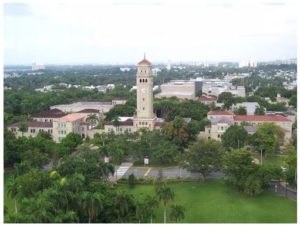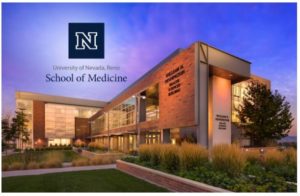Getting into medical school is unquestionably a hard task. Even with a good GPA, admittance to the world’s most prestigious medical school is not guaranteed. Read more about MCAT prep test programmes in order to score well thus stand a higher chance to enter your ideal medical school. This post about the 20 easiest medical schools to get into is a comprehensive guide to help you apply.
The world population in 2018 is predicted to be 7.48 billion people. According to sciencedaily, around 95 percent of the world’s population suffers from some form of health problem. Essentially, as the world’s population grows, so does the number of doctors required around the world.
Someone has to look after this swarming throng of sick people. Furthermore, these specialists must be trained to treat human life with the highest care and regard. While this is a fantastic job, medical schools acknowledge that it is not for everyone who wants to serve others by becoming a medical doctor.
As a result, the screening procedure in medical schools has grown rigorous and extremely competitive. This makes it extremely difficult for pupils to achieve acceptance. Some of these medical colleges, however, have a less stringent admissions process than others.
Our list of the 20 easiest medical schools that are easy to get into can help you analyze your alternatives, apply correctly, and begin your career as a doctor by enrolling in a medical program.
Why Easy Medical Schools?
A medical school is a tertiary educational institution, or part of one, that teaches medicine and grants professional degrees to physicians and surgeons. In a nutshell, medical schools are training grounds for ambitious students who want to help sick people get better.
Medical schools are critical because they teach aspiring students the intricacies of the profession. The most difficult schools to get into among colleges all across the world are unquestionably medical schools.
Medical schools around the world accept admission requests from clever students and then proceed to instill life concepts and how to selflessly dedicate oneself to the good health of others as well as oneself.
You should first attend a medical school to obtain the necessary degree and license to practice as a physician anywhere in the world. Second, medical schools are critical for people who want to improve the lives and health of others while also becoming lifelong learners in an intellectually fascinating vocation.
Surprisingly, there are excellent clinical and non-clinical work opportunities available to medical schools graduates.
Why is it so difficult to get into medical schools?
You’re undoubtedly asking why admission to medical schools should ever be difficult. Why, however, do medical schools have to cut short the ambitions of young stars who want to become medical physicians, given that the services they provide are evergreen and essential?
Your various queries are reasonable, yet medical schools have excellent reasons for their stringent admissions procedure. First and foremost, medical schools recognize that the survival of many sick individuals is in the hands of the graduates they produce. Life is terrifying for this profession, and it must be at the heart of all other decisions.
As a result, there are some medical schools with low acceptance rates because they want to admit only the finest of the best. As a result, the likelihood of producing low-cost medical doctors will be reduced.
Medical schools use the most stringent techniques to admit only the most intellectually competitive individuals, based on the number of students that apply for this profession each year.
Another reason why admittance to medical schools is so difficult is the lack of resources in these schools. This profession necessitates stringent and thorough supervision to ensure that all students are brought along. Only a few students must be admitted to keep up with a few students to a lecturer class size.
As a result, with over 816,000 people applying to medical schools, entrance to medical schools is not an easy undertaking. Thus, this article will filter a few easiest medical schools for you to enroll.
What are the Requirements for Medical School?
One of the reasons why medical schools appear to be difficult to enter is the standards for admission. These requirements differ from one medical school to the next. However, there are several that are commonly required for admission to most medical schools.
Most medical schools in the United States require students to provide copies of the following documents:
- High school diploma
- A bachelor’s degree in the sciences (3-4 years)
- A minimum undergraduate GPA of 3.0 is required
- Good TOEFL language results
- Recommendation letters
- Extracurricular Activities
- Minimum of MCAT exam score (set by each university individually)
Which are the Easiest Medical Schools to Get into?
Before applying to a medical program, students should take a variety of criteria into account. While you may be anxious to apply and receive admission quickly, you should also evaluate the reputation of the medical school and the program’s connections with the nearby healthcare facilities. Here are some tips on applying to med school with low GPA and what is the MCAT lifetime limit of the retake policy.
What are the easiest medical schools to get into? If you’re seeking for the easiest md school to get into this year, examine the following factors:
To assess your chances to get into medical school, thoroughly examine its admission rate. This merely refers to the total percentage of students who are considered each year, regardless of the number of applications received.
The lower the acceptance rate of a medical school, the more difficult it is to gain admission.
Most medical schools require a very high GPA as well as high MCAT and other exam results. If you are an international student, these prerequisites should be carefully considered to assess your prospects of admission to a medical school.
Knowing these statistics for some of the easiest medical schools to get into will greatly aid your application process and save you time conducting the tedious research yourself.
To get into medical school can be competitive and tough, but there are many excellent medical schools that are both affordable and reasonably straightforward to obtain admission to. We’ll break down both in this list so you can make an informed decision about which medical schools to get into.
Easiest US Med Schools to Get Into
1. University of Missouri – Kansas City School of Medicine

The University of Missouri School of Medicine in Kansas City, Missouri, is one of the easiest md programs to get into and it ranks first on the list of the easy medical schools to get into. Six medical programs with 19 specialities are available at the medical school. Students can choose between a six-year BA/MD program and a four-year MD program.
It collaborates with six renowned hospitals to give students with fieldwork experience, providing students with ample clinical experiences on a weekly basis. It has an excellent medical program that exposes students to hands-on practical field work throughout their first year.
The LCME has fully accredited the Kansas City School of Medicine.
To be considered for admission, students must have at least a minimum GPA and minimum MCAT of 3.0 and 500, respectively. However, the typical matriculating student has a average GPA and average MCAT of 3.56 and 497. The minimum MCAT score was recently raised.
Tuition costs for non-residents are slightly more than average for all medical schools, at $61,052, but are fairly standard for in-state residents, at $31,463. According to the Princeton Review, the med school has a 20% admission rate and currently has 645 students enrolled.
Admission Statistics:
- Acceptance Rate: 20%
- GPA: Minimum 3.0, Average 3.56
- MCAT: Minimum 500, Average 505
- Tuition Rate: $31,463 IS /$61,052 OOS
2. The University of Mississippi School of Medicine

The university is based in Jackson and has a School of Medicine that provides a variety of health-related disciplines. It teaches students with the objective of building a healthier Mississippi and training 1,000 physicians in the next five years. In fact, the medical program is so good that its students have access to various professional hospitals for real-world experience.
During your four years of M.D. study, you will be taught how to apply the medical school’s basic values, such as diversity and inclusiveness, to your future professional career. You may also be interested in the college’s seven-year combined M.D.-Ph.D. program, which is available to exceptional students who want to combine clinical abilities with research.
According to the Princeton Review, the UM School of Medicine accepts 40.7% of applications and currently has 407 students enrolled. Tuition fees vary drastically depending on whether the applicant is a state resident or not, ranging from $408/hour to $1,143/hour.
According to the University of Mississippi School of Medicine website, “90% of first-year students get some type of financial aid.” In terms of admittance, the average GPA of UM’s entering classes is 3.6, with average MCAT scores approximately 504.
The university’s medical school is the state’s sole Level 4 neonatal and Level 1 trauma facility, as well as the apex of all organ transplant programs. The medical program at UMC is fully accredited by the Commission on Colleges of the Southern Association of Colleges and Schools.
Admission Statistics:
- Acceptance rate: 40.7%
- GPA: Minimum 2.8, Average 3.6
- MCAT: Minimum 493, Average 504
- Tuition Rate: $26,949 IS / $62,881 OOS
3. San Juan Bautista School of Medicine

One of the easiest medical schools to get into is the San Juan Bautista School of Medicine. The admittance requirements for the San Juan Bautista School of Medicine in Caguas, Puerto Rico, are fairly unusual. According to their website, candidates for an M.D. degree must be able to demonstrate capabilities in six areas:
- Observation
- Communication
- Motor
- Conceptual, Integrative, and Quantitative
- Behavioral and Social
- Ethical
In addition, conventional science and mathematics education, such as biology, organic and inorganic chemistry, and physics, is necessary. Being one of the easy med schools to get into, this school’s minimum approved GPA is 2.75, which is lower than the national average.
Tuition for residents begins at $11,750 per semester ($23,500 per year) and $15,500 per semester ($31,000 per year) for non-residents. Including all additional fees, materials, medical insurance, accommodation, meals, and transportation, annual costs for residents and non-residents are approximately $58,000 and $66,000, respectively.
Admission Statistics:
- Acceptance Rate; 7.7%
- GPA: Minimum 2.75, Average 3.43
- MCAT: Minimum 492, Average 494
- Tuition Rate: $23,500 IS / $31,000 OOS
4. North Dakota University School of Medicine and Health Sciences

The School of Medicine & Health Sciences at the University of North Dakota provides eight healthcare programs, including the state’s sole four-year MD degree. UND, North Dakota’s oldest university, collaborates with clinical sites throughout the state where students can train after their second year. It has one of the best medical programs in the area. In fact, it invests more than $20 million in research each year.
UND admits approximately 28% of medical school candidates, making it one of the most competitive medical schools. By committing to accepting a particular percentage of qualified applicants each year, the university seeks to provide educational opportunities for American Indian students.
Its medical school receives over 1330 applicants, with more than 90% originating from outside the state. Its medicine school has partnerships throughout the state, allowing its students to train at a variety of clinical settings during their second year.
Prospective students must submit MCAT score, letters of recommendation, and a portfolio of their experiences and traits. The admissions office does not have a minimum MCAT requirement, but all applicants must at least have a GPA of 3.0.
Admission Statistics:
- Acceptance Rate: 18.79%
- GPA: Minimum 3.0, Average 3.7
- MCAT: No Minimum, Average 506
- Tuition Rate: $30,238 IS / $54,730 OOS
5. Louisiana State University Health Sciences Center Shreveport

Louisiana State University Health Shreveport was the first state university in Louisiana to offer medical education when it opened its doors in 1969. The University of Health Sciences is still the sole medical school in north Louisiana, and one of just three in the Bayou State. LSU Health Shreveport is an important part of the local economy and health-care system.
For students interested in conducting research, LSU Health Shreveport offers collaborative Ph.D. programs with Louisiana Tech. In addition, the college provides 43 fully approved residency and fellowship programs. The medical school is fully accredited by the ACGME, LCME, and SACSCOC.
The college admits approximately 20% of medical school applicants and does not use GPA or MCAT cutoffs. The student, on the other hand, has an average GPA of 3.7 and average MCAT of 509.
The University of Health Sciences now has 391 students and accepts approximately 11% of applicants each year.
Admission Statistics:
- Acceptance Rate: 17%
- GPA: Minimum 3.2, Average 3.7
- MCAT: No Minimum, Average 509
- Tuition Rate: $28,591.75 IS / $60,413.75 OOS
Additional prerequisites for admission to the MD program include:
- English: 6 hours
- Chemistry: 12 hours
- Biological Science: 12 hours
- Humanities: 12 hours
6. University of Puerto Rico School of Medicine

The best bilingual medical school is the University of Puerto Rico School of Medicine, which offers lessons in both English and Spanish. The med school provides an M.D. program, as well as M.S. and Ph.D. programs.
The first two years of your M.D. programs are spent studying biological sciences, whereas the last two years are spent doing clinical clerkships. The origins of its School of Medicine can be traced back to an early twentieth-century battle with anemia that afflicted a huge portion of Puerto Rico.
The average GPA of matriculating students at the University of Puerto Rico School of Medicine is around 3.75, which is higher than normal, while MCAT scores are slightly below normal, at 25 out of 45 on the old scoring system. The total cost of attendance for students in-state is around $37,500, while students out-of-state pay $47,924.
Admission requirements for the program include:
- Undergraduate degree with at least 3.0 GPA
- Working knowledge of English and Spanish
- Three letters of recommendation
Admission Statistics:
- Acceptance Rate: 14%
- GPA: Minimum 2.5, Average 3.7
- MCAT: Minimum 490, Average 500
- Tuition Rate: $30,380
7. Mercer University School of Medicine

This is one of the oldest universities in the United States. It has received a national reputation as an exceptional southern institution for a variety of programs. Mercer University School of Medicine was founded with the goal of teaching physicians to fulfill the needs of Georgia’s rural and underprivileged populations, and it offers an M.D. curriculum that emphasizes early patient care experience.
While pursuing your M.D., you will have the option to participate in a variety of research projects. Aside from the M.D., the school also provides a Ph.D. in rural health sciences, as well as master’s degrees in biomedical and preclinical sciences and family therapy.
Essentially, Mercer University School of Medicine has graduated over 121 individuals into its M.D. program. Admission to this M.D. program is only open to students who have completed one year of biology, general chemistry, organic chemistry and physics.
On the former scoring system, students at Mercer University School of Medicine in Macon, GA, had a average GPA and average MCAT of 3.61 and 29. As of 2014, tuition for students pursuing a Doctor of Medicine was $41,457.
Admission Statistics:
- Acceptance Rate: 10.4%
- GPA: Minimum 3.4, Average 3.61
- MCAT: Minimum 503, Average 505
- Tuition Rate: $41,457
8. University of Arizona College of Medicine

The University of Arizona College of Medicine in Tucson, Arizona, ranks eighth on our ranking of the easiest medical schools to get into. Even though the entrance standards of the medical school are slightly higher than normal, with a mean average GPA of 3.6 and average MCAT scores of 31, with a minimum of 24 (old scoring format), it is still very reasonable.
The med school takes a holistic approach to admission and will assess your experiences, so include as many experiences and/or other heavy factors in your application as possible, such as internships and work experiences.
Tuition rates begin at $37,736 for Arizona residents and $58,410 for out-of-state students. According to the Princeton Review, the University of Arizona College of Medicine now has 406 students enrolled and accepts only 8% of applicants.
Admission Statistics:
- Acceptance Rate: 3.6%
- GPA: Minimum 3.0, Average 3.6
- MCAT: Minimum 498, Average 509
- Tuition Rate: $37,736 IS / $58,410 OOS
9. University of Massachusetts Medical School

The University of Massachusetts Medical School in Worcester provides training in a variety of medical fields, with a focus on primary care specializations. Both in-state and out-of-state citizens can enroll in the school’s MD and MD/Ph.D. programs.
UMMS collaborates with two acute care hospitals and has ties with a number of community hospitals and health facilities throughout the region. Clinical requirements are often completed by students at one of these venues.
UMMS admits only 23% of applicants. All prospective students must have a bachelor’s degree from a recognized institution and provide MCAT results as well as letters of recommendation. They must also go through an interview process. Although UMMS does not have GPA and MCAT scores cutoffs, the average medical student has a 3.7 average GPA and average MCAT score in the 88th percentile.
As one of the easiest med schools to get into, students do not need to have a minimum GPA to be eligible to get into medical school, but the mean GPA for admitted students is 3.73. The minimal MCAT advised is 507, and the average MCAT for admitted candidates is 513. The average acceptance rate is around 23%. Tuition for in-state residents begins at $34,600, while tuition for out-of-state students begins at $59,400.
Biology or Zoology with a lab, Physics with a lab, two semesters of English Composition, one semester of Calculus, one semester of Statistics, and a sequence of Chemistry courses are required for admission to the university. Before applying to the UMMS, students must also complete the prerequisite courses and requirements for at least six years.
Admission Statistics:
- Acceptance Rate: 23%
- GPA: No Minimum, Average 3.73
- MCAT: Minimum 507, Average 513
- Tuition Rate: $34,000 IS / $59,400 OOS
10. Central Michigan University College of Medicine

Central Michigan University College of Medicine offers a well-rounded educational experience to its students by emphasizing a comprehensive curriculum that mixes traditional courses with hands-on training. In addition to the M.D. program, the medical college provides an M.D.-M.B.A. dual degree program to qualifying candidates who desire to supplement their medical education with leadership and management training.
The first two years of your M.D. program contains a student-centered pre-clerkship curriculum focusing on the fundamental sciences. Your third and fourth years will be spent in clinical clerkship settings. Year three consists of five mandatory clerkships, whereas year four includes a selection of clinical electives.
The medical school’s tuition rate is around $40,070 for in-state residents and $73,522 for out-of-state students. Two semesters of biological science with laboratories and two semesters of organic chemistry are required for admission to the Central Michigan University College of Medicine.
Admission Statistics:
- Acceptance Rate: 22%
- GPA: No Minimum, Average 3.7
- MCAT: Minimum 498, Average 504
- Tuition Rate: $40,070 IS / $73,522 OOS
11. The University of New Mexico School of Medicine

Every year, the University of New Mexico School of Medicine accepts 100 new medical students. Approximately 22% of all applicants are accepted by the medical school. To be eligible for admission into the medical program, candidates must have a minimum GPA of 3.0, while the mean GPA among admitted students is 3.77.
Students seeking admission to the UNM School of Medicine must have at least a MCAT of 491. The approved students’ average MCAT is 504. The medical school costs $15,848 for in-state students and $45,396 for out-of-state students.
Admission to the UNM School of Medicine requires at least two semesters of each of the following courses: General Biology I and II, General Chemistry I and II, Organic Chemistry I and II, and General Physics I and II. Furthermore, with only one semester of completion, Biochemistry is necessary. The UNM School of Medicine also requests that the required Biochemistry coursework be at the 400 level.
Admission Statistics:
- Acceptance Rate: 22%
- GPA: No Minimum, Average 3
- MCAT: Minimum 494, Average 504
- Tuition Rate: $15,848 IS / $45,396 OOS
12. University of Oklahoma School of Community Medicine

The aim of the University of Oklahoma College of Medicine is to be a leader in health care teaching, research, and patient care. The four-year curriculum for your M.D. degree at the college comprises both basic scientific and clinical courses. Students who want to supplement their practice with public health knowledge might enroll in concurrent MPH coursework. Through research, in-house educational resources, and cooperation with other universities and community organizations, the OU School of Community Medicine drives medical innovation.
To train students, the college employs an innovative simulation center. Medical students can practice clinical skills on high-tech mannequins at the center.
Beginning in your first year, you’ll be working with patients, initially with standardized patients and then with those in hospital settings, where you’ll practice interviewing skills. During years three and four, you will be expected to complete clinical clerkships in family medicine, internal medicine, and a variety of specialist fields.
The completion of General Zoology or Biology with a Lab for one semester is required for admission to the University School of Medicine. Medical school applicants must also have taken a semester of Genetics, Cellular Biology, or Molecular Biology. They must also have completed at least two semesters of General Chemistry, Organic Chemistry, Physics, and English. Students may additionally take three semesters of Psychology, Sociology, Humanities, or Philosophy. The OU School of Medicine additionally suggests that applicants take biochemistry classes as well as an intensive writing or English course.
Admission Statistics:
- Acceptance Rate: 14.6%
- GPA: Minimum 3.0, Average 3.7
- MCAT: Minimum 492, Average 508
- Tuition Rate: $24,752 IS / $56,592 OOS
13. University of South Dakota Sanford Medical School

The University of South Dakota School of Medicine was founded in 1907 and has since evolved to be recognized as one of the greatest rural medicine programs in the country. It has received the Association of American Medical Colleges’ prestigious Spencer Foreman Award for Outstanding Community Service.
Sanford focuses on rural family medicine in order to help previously underprivileged populations. The four-year M.D. program at the college is divided into three sections. Pillar 1 and 2 are concerned with gaining a foundational understanding of biomedical systems and beginning clinical clerkships. The last pillar allows students to pursue surgery subspecialties, internships, electives, research, and international experiences.
Admission to the University of South Dakota’s Sanford School of Medicine requires completion of at least 64 semester credits of course work for consideration by the admissions committee, and a minimum of 90 semester credits before enrollment. In addition, to be accepted for the medical school program, applicants must finish a number of courses.
The medical school applicants must have completed at least two semesters of Biology, General / Inorganic Chemistry, and Physics. Students and applicants must also finish one semester of Organic Chemistry, Biochemistry, Statistics, and Mathematics. In addition to the prerequisite courses stated above, the Sanford School of Medicine at the University of South Dakota advises that students take one semester each of Microbiology, Physiology, Genetics, Sociology, and Psychology, as well as a second semester of Organic Chemistry.
Admission Statistics:
- Acceptance Rate: 14%
- GPA: Minimum 3.1, Average 3.86
- MCAT: Minimum 496, Average 509
- Tuition Rate: $15,386 IS / $36,870 OOS
14. University of Nevada Reno School of Medicine

The major goal of the University of Nevada School of Medicine is to educate primary care physicians. The School of Medicine at the University of Nevada, Reno provides a regular MD degree, a BS/MD degree, and a post-baccalaureate certificate program. Students can also pursue dual degrees, such as an MD/MPH, an MD/MBA, or an MD/Ph.D., at the medical school.
Students have the opportunity to see and participate in cutting-edge research in order to obtain hands-on experience. The first year of the curriculum alone includes exposure to a clinical environment.
The medical school has a small community vibe, with a student-to-faculty ratio of 3-to-1. Students begin working in clinical environments during their first year.
Admission Statistics:
- Acceptance Rate: 12%
- GPA: Minimum 3.7, Average 3.6
- MCAT: Minimum 498, Average 508
- Tuition Rate: $37,736 IS / $58,410 OOS
15. University of Nebraska Medical Center

The university may be traced back to the 19th century. Since its foundation in Omaha, Nebraska, the school of medicine has been dedicated to improving healthcare throughout the state.
Through its involvement in the construction of the Lied Transplant Center, the Lauritzen Outpatient Center, and the Twin Towers research facility, the medical school has been recognized globally for its commitment to health improvement.
Through practice-based learning, medical students at the University of Nebraska Medical Center obtain in-depth medical, clinical, interpersonal, and professional skills. Students can pursue one of UNMC’s MD enrichment courses in addition to a standard medical degree. Dual-degree programs, an interdisciplinary educational track, and an honors thesis program are among the options.
Admission Statistics:
- Acceptance Rate: 9.8%
- GPA: Minimum 3.8, Average 3.75
- MCAT: Minimum 498, Average 511
- Tuition Rate: $30,380
16. East Carolina University- Brody

The Brody School of Medicine at East Carolina University was founded by the state government with a three-part objective in mind. The goal was to increase the number of primary care physicians serving North Carolina, enhance the health of individuals in the state’s eastern regions, and expand access to medical education for disadvantaged and minority students.
The ECU School of Medicine is also nationally recognized for the number of medical students pursuing careers in primary care. This program has a high return on investment.
Students can earn an MPH, an MD, or a Ph.D. They may also choose to pursue a dual-degree program. Because of the school’s small class numbers, students get to know their classmates and interact closely with staff, resulting in a more personalized learning experience.
The distinction track programs at Brody allow students to pursue an area of interest related to their medical career objectives. Furthermore, the school’s summer program allows prospective students to observe what medical school is like and prepares them for the demanding standards of the program.
The SACSCOC and LCME have fully accredited the Brody School of Medicine.
Admission Statistics:
- Acceptance Rate: 8.00%
- Median GPA: 3.66
- Median MCAT: 508
17. Medical College of Georgia at Augusta University

The Medical College of Georgia at Augusta University was one of the country’s original medical schools, dating back nearly 200 years. MCG focuses on improving healthcare in Georgia, with 48 percent of graduates preferring to practice medicine in the state after getting their degree.
The medical college promotes healthcare innovation, optimization, and research. It provides a medical program that can be finished in eight years.
It provides a flexible program that allows students to attend at various stages of their studies. In addition to a high-quality education, students have access to a network of physicians, researchers, instructors, and classmates. In addition to the M.D. degree, the college offers dual-degree programs in M.D./Ph.D. and B.S./M.D.
MCG is currently one of the largest medical schools in the United States, with 240 students per class. Several medical degrees are available through the school’s 23 departments.
Admission Statistics:
- Acceptance Rate: 7.40%
- Median GPA: 3.84
- Median MCAT: 512
18. University of Arkansas for Medical Sciences College of Medicine

The University of Arkansas for Medical Sciences College of Medicine educates the vast majority of the state’s physicians. Creativity, excellence, health equity, honesty, respect, and cooperation are just a few of the colleges’ many fundamental principles.
You can pursue an M.D., M.D./Ph.D., or M.D./M.P.H. degree at the college. Students who have graduated from the med school, on the other hand, always have access to the school’s continuing medical education office. In truth, the advantage stems from the fact that the medical education office is the sole nationally authorized supplier of continuing education credits required to keep one’s physician license current.
Admission Statistics:
- Acceptance Rate: 7.19%
- GPA: Minimum 2.5, Average 3.83
- MCAT: Minimum 490, Average 508
- Tuition Rate: $30,380
19. University at Buffalo Jacobs School of Medicine

The curriculum of the Jacob School of Medicine and Biomedical Sciences encourages students to use critical thinking and problem solving skills. The program’s objective is to improve wellness over the lifespan of New Yorkers while having a global impact.
The medical school was founded almost 150 years ago and has admitted approximately 140 medical students per year since then. When compared to other medical schools, it offers moderate admission standards for a medical college that has a large impact on the medical community through the development of technologies and methods.
The School of Medicine is well-known for developing implantable cardiac pacemakers, newborn screening, medicines to reduce the progression of multiple sclerosis, and the first minimally invasive spine surgical procedure.
Admission Statistics:
- Acceptance Rate: 7%
- GPA: Minimum 3.0, Average 3.8
- MCAT: Minimum 490, Average 510
- Tuition Rate: $30,380
20. Medical School at the University of Virginia

The University of Virginia School of Medicine, founded by Thomas Jefferson, is one of the oldest medical schools in the country. The Virginia University School of Medicine supports students who make a good difference in their communities, therefore it prioritizes research, public and civic participation, and comprehensive patient care.
Its principles integrate medical practice and research to educate and train physicians to deliver patient-centered care, use evidence-based medicine, and engage in lifelong learning.
Admission Statistics:
- Acceptance Rate: 44%
- GPA: Minimum 3.84, Average 3.7
- MCAT :Minimum 517.76, Average 508
- Tuition Rate: $48,416
Conclusion
It might be tough to gain admission to a medical school. While many students grumble about the strictness of the med school admissions policies, the profession is so honorable that only the best pupils are admitted.
It is also crucial to highlight that this strictness is in place for a variety of reasons. One of the most crucial reasons is that these medical schools are producing graduates who will aid in the healing of many sick people.
As a result, because life is sacrosanct, only the most intelligent, academically sound, and unselfish persons should defend it.
As a means of selecting the finest, these stringent criteria lead students to believe that getting into medical schools is more stressful than studying the course itself.
While this is true to some extent, this list of the 20 easiest medical schools to get into identifies the schools with the best odds for applicants seeking admission.
FAQ
How Should I Choose Which Medical School I Should Apply?
To know which medical to apply to, first thing you should make sure to check if your GPA and average MCAT score are incompetent with the institutions’ requirements. At the very least, you must at least satisfy the minimum requirement set by the previous year’s matriculants.